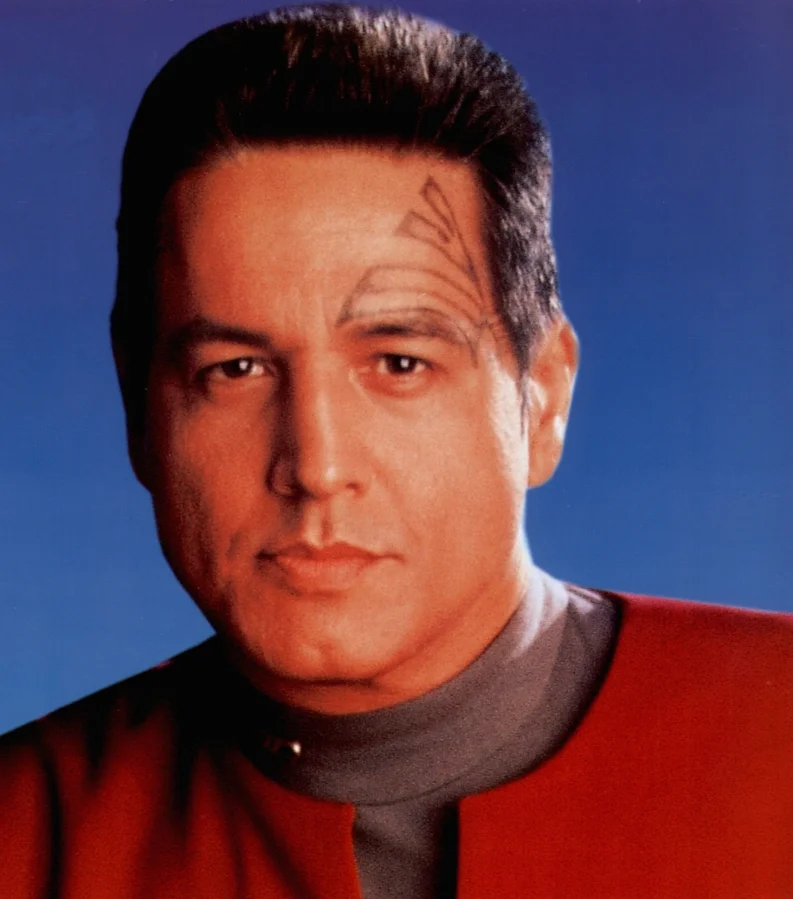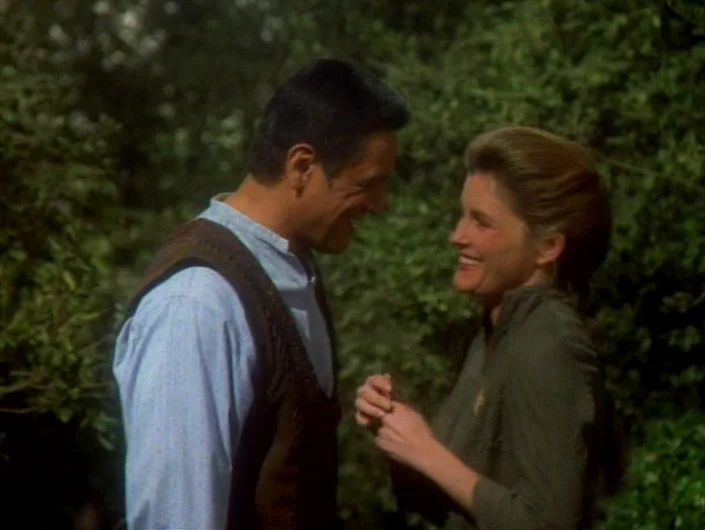by Lorrie Sears
Star Trek: Voyager was one of two series created with the Star Trek name without the consultation of the franchise creator Gene Roddenberry. After Roddenberry’s death in 1991, Rick Berman became the “heir apparent,” carried on with TNG and eventually created the aforementioned series. Roddenberry’s vision of Star Trek logically leads to a show similar to Voyager, hearkening back to the original series in many ways. Without a doubt, Roddenberry would have found numerous reasons to enjoy and welcome Voyager into the Star Trek family.
First and foremost, a woman at the helm was a timely tribute to the ever-changing dynamic of women’s roles in America, a fact that Roddenberry recognized even in the 1960s. Captain Janeway brought a nurturing role to her captaincy, sometimes looking out for the well-being of her crew to the detriment of herself. In “Year of Hell,” this is evidenced when she takes it upon herself to repair a failing portion of the ship, only to be burned. Insisting that all others on the deteriorating ship leave, she destroys herself to save thousands of others.
The future Roddenberry saw put men and women on an equal plane. He had an appreciation for strong women. The character of B’Elanna Torres brought another strong woman to the show. She held her own right from the beginning, not backing down from her beliefs. When Janeway destroys the array, effectively stranding the two crews in the Delta Quadrant, Torres rails against her authority. She eventually, and almost too easily, blends in and becomes part of the combined crew, and stands behind Janeway’s decisions when the other Maquis want to rebel. Torres eventually became an integral part of the close-knit crew, following Starfleet protocols, but keeping her feisty Klingon nature.
Seven of Nine probably would have been appreciated by Roddenberry, as a strong and I suppose I’ll admit, beautiful woman. The character’s development (tongue in cheek) made her that strong female, and not her other assets. She brings an intelligence and efficiency to the ship. Having the knowledge of various cultures assimilated by the Borg gets the Voyager crew out of life-and-death situations countless times.
Other aspects of the series lend themselves to the vision that Roddenberry had developed in his time. Exploration became the prime mission, second only to the desire to return to the Alpha Quadrant. The list of aliens Voyager made first contact with is lengthy, and like captains before her, Janeway is a decent diplomat. Janeway’s sometimes cavalier attitude towards the Prime Directive is reminiscent of Kirk’s early days of exploring. She chooses to help some civilizations, while leaving others to die off naturally. The character of Tom Paris is not unlike Riker in his playboy days. Tom’s bravado in describing and making attempts to romance every woman on the ship describes Kirk as well. Roddenberry would have also delighted in the technologically advanced ship and sharp-tongued holographic doctor.
There do exist, however, aspects of Voyager that Roddenberry would not have embraced. His attitude towards race seemed almost non-existent. In his future, humans carrying on aspects of their cultural heritage did not allow these traits to define who they were. The character of Chakotay, while being a groundbreaker by creating the first Native American character, never settles on one specific tribe. His actions are portrayed in ways that are sometimes stereotypical “Indian” behaviors.
Conflict, the central element in most episodes, was unbalanced at times. The Kazon, villains who were not capable of finding such a basic thing as water, out-maneuvered Voyager on several occasions. And Voyager beat the Borg, the most terrifying enemy in the Alpha Quadrant, soundly. Hirogen hunters went happily into the night after being given technology to create holodeck hunts, after skinning and boiling the bones of their former victims. Overwhelmingly, Voyager was the series that focused on technobabble and the tech save of the week. Roddenberry’s main focus was on the characters, the human relationships. To him, problem solving would have taken place in a discussion, with every character having a say. Many times, the decisions were made before the staff meeting occurred on Voyager.
If Roddenberry had survived to see Voyager created, he would have made some changes to the final product we saw. He would never have had Voyager travel through time as we saw in many episodes. His attitude towards relationships within the crew on TNG was much more relaxed, so other crew marriages and babies would have happened on Voyager, starting at the very top of the crew. They were seventy-five years away from home; that would have made sense. Besides, women of the ‘90s were used to women trying to do it all, a.k.a., “superwomen”; there were many previous role models on TV. And Hillary Rodham Clinton, the first lady at the time, held her own as a competent lawyer and governor’s wife prior to her days in the White House.
Ultimately, Roddenberry would have proud of Voyager. Its revolutionary idea of putting a woman in charge of a ship was the next logical step of his vision. A ship exploring an unknown quadrant of space, upholding principles of decency and friendship; that was what it was all about for him. Voyager would have gotten Roddenberry’s stamp of approval.




